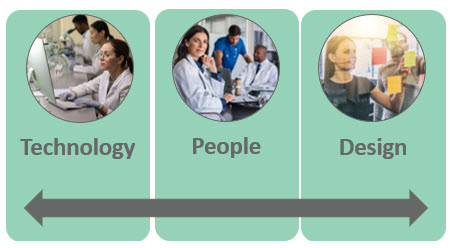Laboratories, large and small, increasingly rely on technology and digital solutions, such as Laboratory Information Management Systems (LIMS), to manage their lab processes and data efficiently, and securely. By connecting and automating processes, data, instruments and systems, a LIMS promotes improvements in data quality, integrity, compliance, and productivity across your laboratory.
However, many LIMS implementations fail to deliver the anticipated benefits; leaving managers and laboratorians frustrated and reverting to manual, paper-based systems. But is the LIMS at fault?
A digitally connected laboratory
The aim of digitalising and connecting your laboratory processes and activities is to provide a frictionless experience for laboratorians. However, this does not mean that every activity should be automated or digitalised. Some activities will, appropriately, remain manual.
What’s more, implementing efficient lab processes in a LIMS involves more than digitalising what you currently do manually. For instance, mapping an inefficient process into a LIMS will not make it efficient. Instead, you should identify where the inefficiencies are and redesign the process to eliminate or reduce them.
In addition, unlike manual process design, considerations such as when and how users will input data into the LIMS will have a significant impact on process creation. For example, do users input data into the LIMS before they start the process, as they conduct the process or after they’ve completed all their activities?
Likewise, if some or all of the data are to be transferred from instruments or dynamically created by the LIMS using logic, how do you include these steps in the process? Also, importantly, how are you going to deal with any issues?
Why processes fail in LIMS
There are 3 main reasons labs fail to implement efficient processes in a LIMS:

- Technology – The LIMS does not offer low-code, no-code configuration tools or a Laboratory Execution System (LES) and as a result, you cannot create or change your lab processes in the system.
- People – There is a lack of clarity and guidance from management on which processes to digitalise and what the expected benefits will be, resulting in a lack of user adoption.
- Design – Over automation and focus on ‘sunny day’ or infrequent processes with minimal benefit can derail implementations and demotivate users and managers.
5 steps to implementing efficient lab processes
Before mapping new processes into a LIMS, it’s important to understand what’s already available in the solution that you can use, adopt, adapt, or extend to meet your requirements. There may already be a process in place in the LIMS that meets or partially meets your requirements. This will save you time and, importantly, resources.
If you’ve decided a new process is required below are 5 steps to consider as part of your design process.
1. Confirm whether you should map the process into the LIMS
Do users carry out this process regularly? Can you automate the process? Is the process externally audited?
2.Decide who to involve in design, implementation, and testing
Which users carry out the process? Who relies on data output from the process? Who provides inputs into the process?
3. Identify impact measurements – ‘When’ and ‘How’
When and how will you know your lab process is more efficient using a LIMS? What improvements are you expecting, for example, an increase in productivity, reduction in time taken or advances in data quality? When do you expect to see benefits; within 3 months, 6 months, 12 months?
4. Draw up a communication plan
How will you communicate process design and progress to those impacted? How are you going to facilitate feedback?
5. Understand what’s required at each process step
Which user roles can carry out the process in the LIMS and what permissions do they need? What are the inputs and outputs? Which steps/actions are you going to automate? Can the user go back a step in the process? What actions are available to the user if there’s an issue?
Implementing efficient lab processes in a LIMS in summary
Mapping processes in a LIMS delivers benefits including increased data efficiency, productivity, and consistency for regulatory compliance.
On a practical level, you should consider who you are going to involve in mapping the process, their specific roles and responsibilities and the feedback mechanisms in place to provide useful and meaningful impact measurements on a regular basis.
By following the correct guidance from system specialists, it’s possible to design a LIMS for the particular and unique requirements of any given laboratory.
Download ‘A Guide to Mapping Laboratory Workflows into a LIMS – Maximise the benefits and avoid common pitfalls’ white paper
This complementary white paper steers you through the common mistakes labs make when digitalising processes and provides you with helpful insight, so you gain maximum benefits from your LIMS on your digital transformation journey. Download white paper.

Comments are closed.